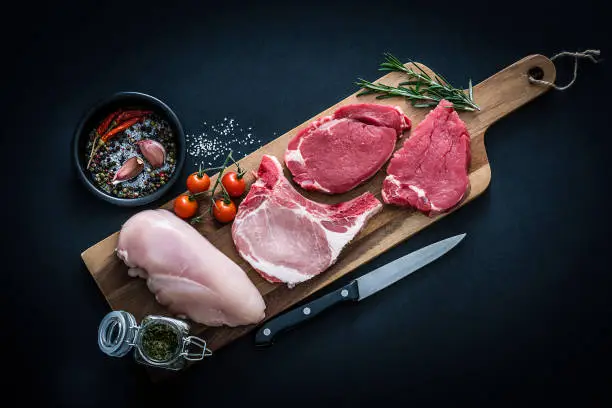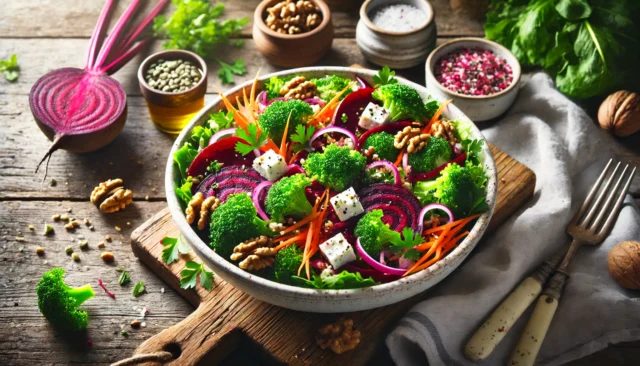Table of Contents
ToggleIntroduction
Protein is the cornerstone of a healthy diet, essential for muscle growth, tissue repair, and overall body function. When choosing protein sources, many people turn to chicken or beef. These two staples dominate meal plans worldwide, but the question remains: Which has more protein chicken or beef? While chicken is often considered the go-to for lean protein, beef lovers argue its nutritional benefits and rich taste make it superior.
In this article, we’ll dive deep into the protein content, nutritional benefits, and other factors to help you make an informed decision. Ready to find out which one fits your goals best? Let’s get started.

Why Is Protein Important?
Protein isn’t just another nutrient; it’s a macronutrient your body can’t live without. Composed of amino acids—the building blocks of life—protein supports everything from building and repairing muscles to producing enzymes and hormones. It’s especially crucial for athletes, fitness enthusiasts, and anyone looking to maintain a healthy, active lifestyle.
Since your body doesn’t store protein like fats or carbohydrates, you need a consistent daily intake. For the average adult, the recommended protein intake is around 0.8 grams per kilogram of body weight—but this can increase based on physical activity levels or specific health goals.
Factors That Influence Protein Content in Meat
When analyzing the protein content in chicken and beef, several factors come into play:
- Cut of Meat: Different cuts (e.g., chicken breast vs. thighs, sirloin vs. ribeye) vary in protein levels due to fat and muscle composition.
- Cooking Methods: Protein content can change depending on whether the meat is grilled, baked, or fried. Overcooking can reduce the quality of protein.
- Animal Type: Chicken and beef inherently differ in protein density due to the composition of their muscle tissues.
- Lean vs Fatty Cuts: Lean cuts generally offer a higher protein-to-fat ratio than fatty cuts.
Protein Content in Chicken
Chicken Protein Breakdown by Cut
Chicken is known for being a lean protein powerhouse, especially chicken breast. Here’s how different cuts compare:
| Cut | Protein (per 100g) | Calories | Fat Content |
|---|---|---|---|
| Chicken Breast | 31g | 165 kcal | 3.6g |
| Chicken Thighs | 26g | 209 kcal | 8.2g |
| Chicken Wings | 24g | 203 kcal | 13g |
Key Takeaways:
- Chicken breast is the highest-protein, lowest-fat option, making it a favorite among bodybuilders and dieters.
- Thighs and wings, though slightly fattier, still pack a solid protein punch and offer richer flavor.
Nutritional Benefits of Chicken
- Lean Protein: With its low fat and high protein content, chicken is ideal for building lean muscle.
- Micronutrient Powerhouse: Chicken is rich in B vitamins (especially B6 and B12), selenium (an antioxidant), and phosphorus.
- Low in Calories: Skinless chicken breast is one of the lowest-calorie protein sources, making it a staple in weight loss diets.
Chicken is also highly versatile in the kitchen, lending itself to countless recipes, from grilled chicken salads to flavorful stir-fries.
Protein Content in Beef
Beef Protein Breakdown by Cut
Beef is no slouch when it comes to protein, though its protein content varies more significantly depending on the cut:
| Cut | Protein (per 100g) | Calories | Fat Content |
|---|---|---|---|
| Sirloin | 27g | 206 kcal | 10g |
| Ribeye | 23g | 291 kcal | 22g |
| Ground Beef (90% lean) | 26g | 217 kcal | 10g |
Key Takeaways:
- Lean cuts like sirloin offer high protein without excessive fat.
- Ribeye, while lower in protein, boasts a richer taste thanks to its higher fat content.
Nutritional Benefits of Beef
- Iron-Rich: Beef contains heme iron, which is easily absorbed by the body and essential for preventing anemia.
- Zinc Boost: Beef is an excellent source of zinc, crucial for immune health and wound healing.
- B Vitamins: Beef, particularly grass-fed, is packed with B12 and other B vitamins needed for energy production.
Chicken vs. Beef: A Side-by-Side Protein Comparison
To make it easy, here’s a direct comparison of protein content per 100 grams of cooked meat:
| Meat Type | Cut | Protein | Calories |
|---|---|---|---|
| Chicken | Breast | 31g | 165 kcal |
| Chicken | Thighs | 26g | 209 kcal |
| Chicken | Wings | 24g | 203 kcal |
| Beef | Sirloin | 27g | 206 kcal |
| Beef | Ribeye | 23g | 291 kcal |
| Beef | 90% Ground Beef | 26g | 217 kcal |
From the table, it’s clear that chicken breast offers the highest protein-to-calorie ratio, making it a leaner option. However, beef provides additional nutrients like iron and zinc that chicken lacks.
Additional Considerations: Calories, Fat, and Flavor
- Calories: Chicken is lower in calories compared to most beef cuts, making it more weight-loss friendly.
- Fat Content: Beef, particularly cuts like ribeye, is higher in saturated fat, while chicken primarily contains healthier unsaturated fats.
- Flavor: Beef wins in the flavor department for its richness and tenderness, while chicken’s neutral taste makes it more adaptable to various cuisines.
Which Is Better for Your Goals?
For Muscle Gain:
Both chicken breast and lean beef are excellent choices. Chicken offers slightly more protein, while beef adds essential micronutrients like iron and zinc.
For Weight Loss:
Chicken breast is the better choice due to its low-calorie, high-protein profile.
For Overall Health:
Including both in moderation is ideal to reap the unique benefits of each.
Sustainability Matters
If environmental impact is a concern, chicken takes the lead. Poultry farming has a smaller carbon footprint compared to beef production, which requires more land, water, and feed resources.
Conclusion
So, which has more protein: chicken or beef? While chicken breast edges out most beef cuts in terms of protein content and calorie efficiency, beef offers additional nutrients like iron and zinc that can’t be ignored.
The choice ultimately depends on your personal goals, whether it’s muscle building, weight loss, or flavor preference. Why not include both in a balanced diet for the best of both worlds?
FAQs
- Is chicken better than beef for weight loss?
Yes, chicken, particularly breast, is lower in calories and fat, making it a better choice for weight loss. - Does beef have more nutrients than chicken?
Beef contains more iron and zinc, while chicken excels in B vitamins and lower fat content. - Can I eat both chicken and beef in one meal?
Absolutely! Combining both can provide a range of nutrients and flavors. - Which meat is better for heart health?
Chicken is generally better for heart health due to its lower saturated fat content. - Is grass-fed beef healthier?
Yes, grass-fed beef contains higher levels of omega-3 fatty acids and antioxidants.



